-
 bitcoin
bitcoin $114320.977035 USD
-0.40% -
 ethereum
ethereum $4152.439985 USD
-1.75% -
 tether
tether $1.000111 USD
-0.04% -
 xrp
xrp $2.843037 USD
-1.63% -
 bnb
bnb $1013.349380 USD
-1.62% -
 solana
solana $208.362767 USD
-2.10% -
 usd-coin
usd-coin $0.999783 USD
0.00% -
 dogecoin
dogecoin $0.232559 USD
-1.00% -
 tron
tron $0.333491 USD
-1.09% -
 cardano
cardano $0.806310 USD
0.19% -
 hyperliquid
hyperliquid $45.023720 USD
-1.59% -
 ethena-usde
ethena-usde $1.000819 USD
-0.06% -
 chainlink
chainlink $21.241249 USD
-2.11% -
 avalanche
avalanche $30.035416 USD
-0.66% -
 stellar
stellar $0.364984 USD
-2.05%
How do I verify MetaMask contract interaction details?
Always verify contract addresses and decode transaction data using Etherscan to avoid scams when interacting with smart contracts via MetaMask.
Sep 30, 2025 at 02:19 am
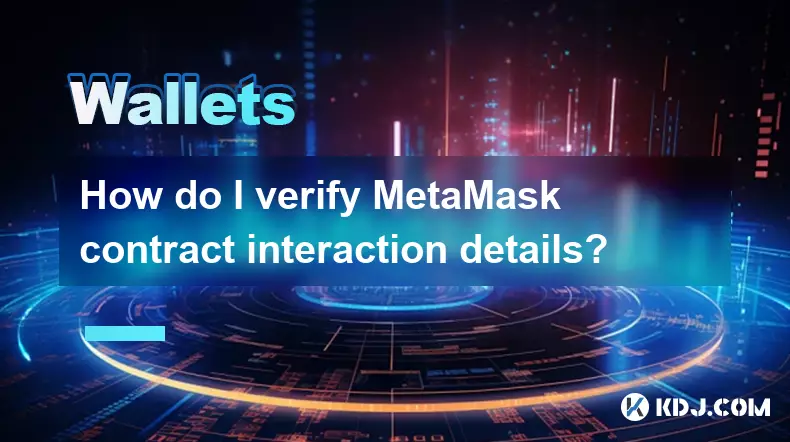
Understanding MetaMask Contract Interaction Verification
1. When engaging with smart contracts through MetaMask, users must confirm the legitimacy of the interaction to avoid scams or unintended transactions. Every contract call—whether it's approving a token, swapping assets, or minting an NFT—requires scrutiny before confirmation.
2. MetaMask displays basic transaction details such as the recipient address, gas fee, and function being called. However, these summaries often obscure critical data. Users should expand the 'Advanced Details' section to inspect raw calldata and verify the exact parameters being sent to the contract.
3. The contract address involved in the interaction is the most crucial element. Always cross-reference this address with official sources like project websites, verified Etherscan pages, or community announcements. A single incorrect character can redirect funds to malicious entities.
4. Function signatures encoded in the transaction data reveal what operation is being executed. Tools like Etherscan’s ABI decoder allow users to decode these inputs and view human-readable function names and arguments, helping identify potentially harmful actions like unlimited token approvals.
5. Never approve a token spend limit higher than necessary. If a decentralized exchange requests approval for an ERC-20 token, ensure the amount is limited to the intended trade value rather than setting an infinite allowance, which exposes assets to future exploitation if the contract is compromised.
Analyzing Transaction Data on Etherscan
1. After initiating a contract interaction, locate the transaction hash in MetaMask and open it on Etherscan. This page provides a comprehensive breakdown of the transaction, including the calling function, input data, and status.
2. Navigate to the 'Input Data' field and click 'Click to More' to view the decoded parameters. Reputable contracts with verified source code will display labeled variables such as _to, _amount, or deadline, making it easier to audit the intent of the call.
3. Check the 'To' address against the known contract address of the platform you're using. Phishing attacks frequently deploy fake frontends that route interactions to cloned contracts designed to steal credentials or drain wallets.
4. Review the 'Internal Transactions' tab to detect any unexpected transfers triggered by the contract execution. Some malicious contracts initiate hidden token movements during seemingly harmless operations like approvals.
5. Use the 'State Changes' section to observe how the transaction alters storage values on-chain. While more technical, this insight can expose unauthorized modifications to ownership roles or access controls within the contract.
Leveraging Security Tools and Browser Extensions
1. Integrate browser tools like Blockaid or Tally Ho’s built-in scanner to automatically flag high-risk contract interactions. These extensions analyze contract behavior and reputation in real time, warning users about known scam patterns.
2. Enable MetaMask’s expanded phishing detection settings and keep the blocklist updated. This prevents accidental interactions with domains impersonating legitimate dApps.
3. Utilize Revoke.cash to monitor existing token allowances. This service identifies active approvals, allowing users to revoke permissions from unused or suspicious contracts that could otherwise exploit unlimited spending rights.
4. Install the MetaMask Swaps privacy feature to hide transaction details from aggregators until submission, reducing the risk of front-running or data harvesting by third-party services.
5. Cross-check contract addresses with community-maintained databases like DeFi Safety or CertiK’s Skynet. These platforms offer risk scores and audit histories that help assess whether a contract has undergone formal security reviews.
Frequently Asked Questions
What does 'Contract Interaction' mean in MetaMask?A contract interaction occurs when your wallet sends a transaction that triggers a function within a smart contract, such as swapping tokens, staking assets, or interacting with NFT marketplaces. Unlike simple ETH transfers, these transactions execute code and may carry additional risks.
Why does MetaMask show 'Unknown Application' for some contracts?This warning appears when the contract has not been verified on Etherscan or lacks metadata recognized by MetaMask. It indicates limited transparency, requiring manual verification of the contract’s code and purpose before proceeding.
Can I cancel a contract interaction after confirming it in MetaMask?Once broadcasted to the network, transactions cannot be canceled. However, you may attempt to replace it by sending a new transaction with the same nonce using a higher gas fee, typically set to 0 ETH and directed to your own address, effectively nullifying the original action.
How do I know if a contract function is safe to call?Verify the function signature against the project’s official documentation. Use tools like Etherscan’s read/write contract interface to test functions without spending gas. Look for community discussions, audit reports, and whether prominent wallets regularly interact with the contract.
Disclaimer:info@kdj.com
The information provided is not trading advice. kdj.com does not assume any responsibility for any investments made based on the information provided in this article. Cryptocurrencies are highly volatile and it is highly recommended that you invest with caution after thorough research!
If you believe that the content used on this website infringes your copyright, please contact us immediately (info@kdj.com) and we will delete it promptly.
- BlockDAG, DOGE, HYPE Sponsorship: Crypto Trends Shaping 2025
- 2025-10-01 00:25:13
- Deutsche Börse and Circle: A StableCoin Adoption Powerhouse in Europe
- 2025-10-01 00:25:13
- BlockDAG's Presale Buzz: Is It the Crypto to Watch in October 2025?
- 2025-10-01 00:30:13
- Bitcoin, Crypto, and IQ: When Genius Meets Digital Gold?
- 2025-10-01 00:30:13
- Stablecoins, American Innovation, and Wallet Tokens: The Next Frontier
- 2025-10-01 00:35:12
- NBU, Coins, and Crypto in Ukraine: A New Yorker's Take
- 2025-10-01 00:45:14
Related knowledge

How to get the Trust Wallet browser extension?
Oct 01,2025 at 12:37am
How to Access the Trust Wallet Browser Extension1. Visit the official Trust Wallet website through a secure internet connection. Navigate to the downl...
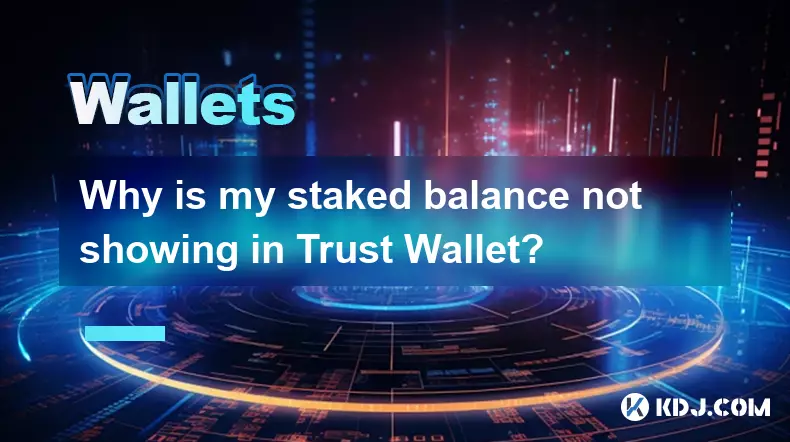
Why is my staked balance not showing in Trust Wallet?
Oct 01,2025 at 12:54am
Understanding Decentralized Exchanges in the Crypto Ecosystem1. Decentralized exchanges (DEXs) operate without a central authority, allowing users to ...
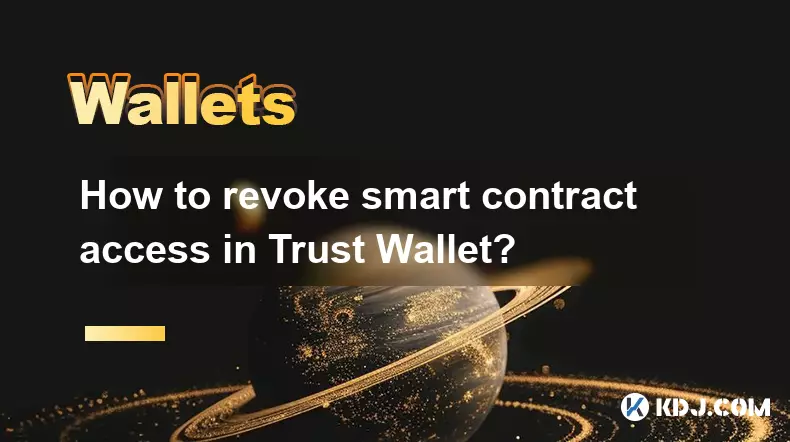
How to revoke smart contract access in Trust Wallet?
Oct 01,2025 at 12:54pm
Understanding Smart Contract Access in Trust Wallet1. Smart contracts are self-executing agreements built on blockchain networks, commonly used in dec...
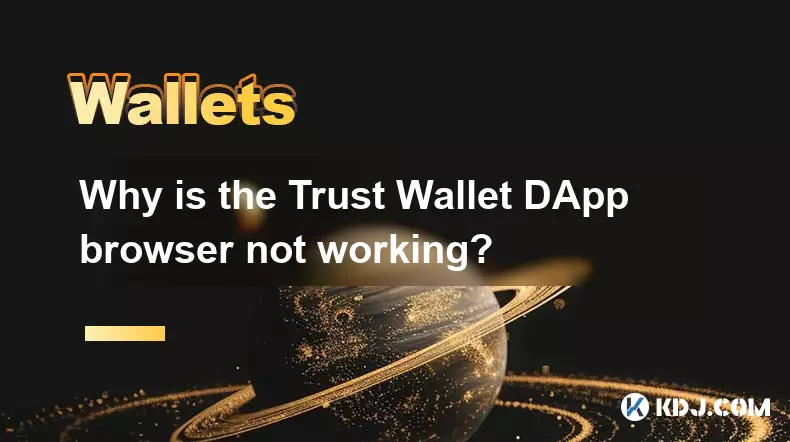
Why is the Trust Wallet DApp browser not working?
Oct 01,2025 at 05:36am
Common Causes of Trust Wallet DApp Browser Issues1. The DApp browser within Trust Wallet may fail to load due to connectivity problems. A weak or unst...
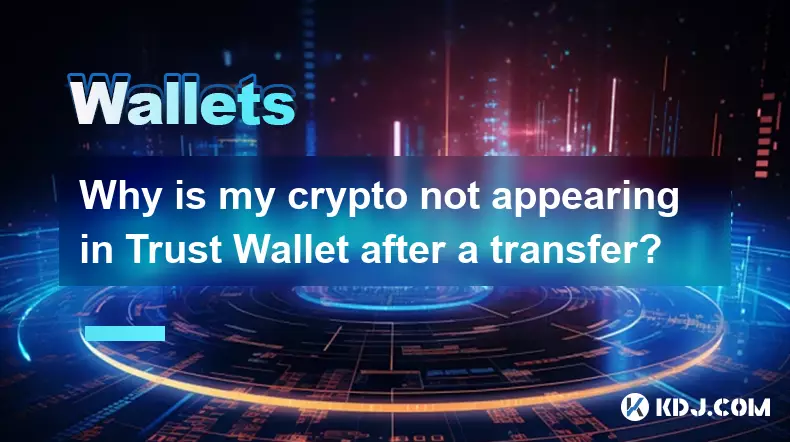
Why is my crypto not appearing in Trust Wallet after a transfer?
Oct 01,2025 at 04:36am
Common Reasons Your Crypto Doesn’t Appear in Trust Wallet1. The transaction is still pending on the blockchain. Blockchain confirmations can take time...
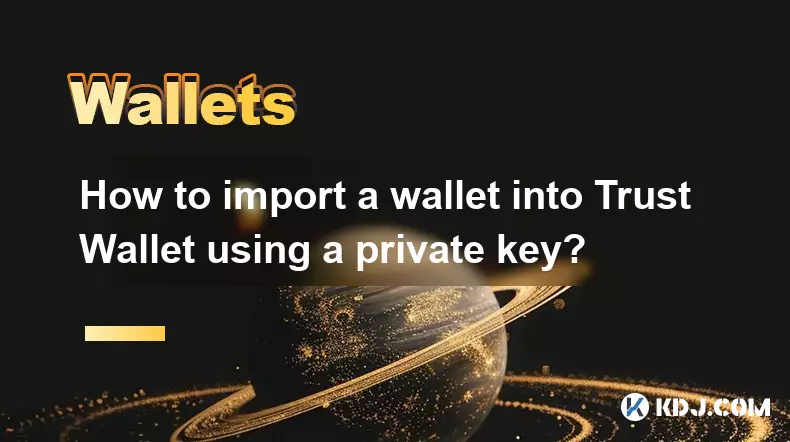
How to import a wallet into Trust Wallet using a private key?
Oct 01,2025 at 09:54am
Understanding Wallet Import via Private Key in Trust Wallet1. Trust Wallet allows users to import existing cryptocurrency wallets using a private key,...

How to get the Trust Wallet browser extension?
Oct 01,2025 at 12:37am
How to Access the Trust Wallet Browser Extension1. Visit the official Trust Wallet website through a secure internet connection. Navigate to the downl...

Why is my staked balance not showing in Trust Wallet?
Oct 01,2025 at 12:54am
Understanding Decentralized Exchanges in the Crypto Ecosystem1. Decentralized exchanges (DEXs) operate without a central authority, allowing users to ...

How to revoke smart contract access in Trust Wallet?
Oct 01,2025 at 12:54pm
Understanding Smart Contract Access in Trust Wallet1. Smart contracts are self-executing agreements built on blockchain networks, commonly used in dec...

Why is the Trust Wallet DApp browser not working?
Oct 01,2025 at 05:36am
Common Causes of Trust Wallet DApp Browser Issues1. The DApp browser within Trust Wallet may fail to load due to connectivity problems. A weak or unst...

Why is my crypto not appearing in Trust Wallet after a transfer?
Oct 01,2025 at 04:36am
Common Reasons Your Crypto Doesn’t Appear in Trust Wallet1. The transaction is still pending on the blockchain. Blockchain confirmations can take time...

How to import a wallet into Trust Wallet using a private key?
Oct 01,2025 at 09:54am
Understanding Wallet Import via Private Key in Trust Wallet1. Trust Wallet allows users to import existing cryptocurrency wallets using a private key,...
See all articles










































































